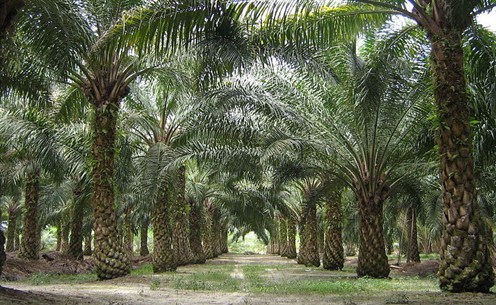Robin Webster
17.04.2014 | 12:15pmThe rate at which we’re chopping down the world’s forests is declining – and in future, crops and newly planted forests could help prevent more climate change, according to the UN.
But uncertainties surrounding how we measure emissions, and what changing temperatures will mean for the world’s forests, mean it’s hard to be sure this is a good news story.
Emissions from farming, deforestation and other land use are going down, and are expected to continue doing so in the future. By the end of the century, humanity could use the land as a carbon sink, rather than a source of emissions, according to the Panel on Climate Change (IPCC)’s latest report.
It sounds like one piece of good news among gloomy predictions from the IPCC. But human land use is only one part of a complex picture.
Climate change could lead to forests drying out, releasing more carbon dioxide in the atmosphere. And using trees, crops and plants as a source of energy instead of fossil fuels could also lead to more forest destruction.
Declining emissions
Agriculture, forestry and other land use account for about a quarter (24 per cent) of man-made greenhouse gas emissions. Most of these emissions come from deforestation, changes to the soil and livestock farming.
Since the IPCC’s last big report was published in 2007, the rate of deforestation has declined – and the rate at which we’re planting forests has increased. Emissions from the agriculture, forestry and land use sector as a whole have probably also decreased as a result, according to its newest report, published on Sunday.
The trend is expected to continue in the future. This is partly because technological change will make land use more efficient. But it’s also because a slowdown in population growth means the speed at which agriculture is expanding into new areas should also reduce, the IPCC says.
By the middle of the century, emissions from the sector could fall to half their current levels. And by 2100, crops, plants and agriculture could be used as a way of storing carbon, rather than a source of greenhouse gas emissions.
Bioenergy and BECCS
Large scale use of wood, plants or other crops as a source of energy – so called bioenergy – could also play a ” critical role” in reducing greenhouse gas emissions, the IPCC says.
The international community has identified a temperature rise of two degrees Celsius above pre-industrial levels as the ‘safety limit’ for dangerous climate change. If we’re going to avoid a two degrees rise, we’re going to need a lot of bioenergy crops as a replacement for fossil fuels, according to the IPCC.
And the IPCC goes a step further. Emissions are rising so fast at the moment that hitting the two degree target would probably mean allowing greenhouse gas concentrations in the atmosphere to ‘overshoot’ the safe limit, and then return to lower levels by the end of the century, according to its report.

Bioenergy crops could play a “critical role” in reducing emissions, the IPCC says – but only under certain conditions.
To achieve this, we may need to use a new technology known as bioenergy with carbon capture and storage (BECCS). BECCS involves burning bioenergy crops, capturing the carbon dioxide that’s released, and then planting more.
Because the new plants capture more carbon, it’s theoretically a so-called carbon negative process. But the technology is at an early stage. So far, it’s only been tried out in a few pilot operations, so it’s hard to know for sure how effective it would be if tried out on a large scale.
Three caveats
The IPCC says that the land use sector – agriculture, forestry and other land use – needs to play an important part in storing carbon and protecting the world from dangerous climate change.
There are a number of caveats to this, however. First, there are very large uncertainties around measuring carbon emissions from forestry and land use change – in the regions of plus or minus 50 per cent. This makes it harder to be sure what’s really happening to emissions in the sector.

If emissions keep going up, there’s a risk the Amazon rainforest will “transform” to a different sort of ecosystem, according to the IPCC.
Second, there are significant uncertainties around what climate change will mean for the world’s forests. Changing temperatures – particularly in combination with other threats like deforestation and forest fires – could in themselves prompt mass forest die-back. Under a high emissions scenario, there’s a “high risk” that ecosystems including the Amazon rainforest could experience “abrupt and irreversible regional-scale change” at some point during the century, the IPCC says.
If vast swathes of forest die off, that could mean even more carbon is released into the atmosphere, making the impacts of climate change worse.
Third, growing crops for bioenergy might not necessarily be a good way of reducing emissions. Large-scale expansion of bioenergy could mean the world’s agricultural land expands, meaning more natural forest is chopped down to make way. Again, this could lead to higher emissions. The IPCC says the scientific debate on this issue – known as indirect land use change – is “unresolved”, and a lot depends on what kind of bioenergy crops are planted, and where.
Unresolved
This leaves a lot of questions about this sector still hanging. In a few decades’ time, it’s possible we could see rapid reductions in emissions from deforestation and agriculture – and significant benefits from the use of bioenergy crops.
This is an important part of plans to reduce emissions over the coming years, the IPCC says. But the many uncertainties, and the complexity of the issues, mean it’s hard to be sure the benefits it promotes will materialise.

